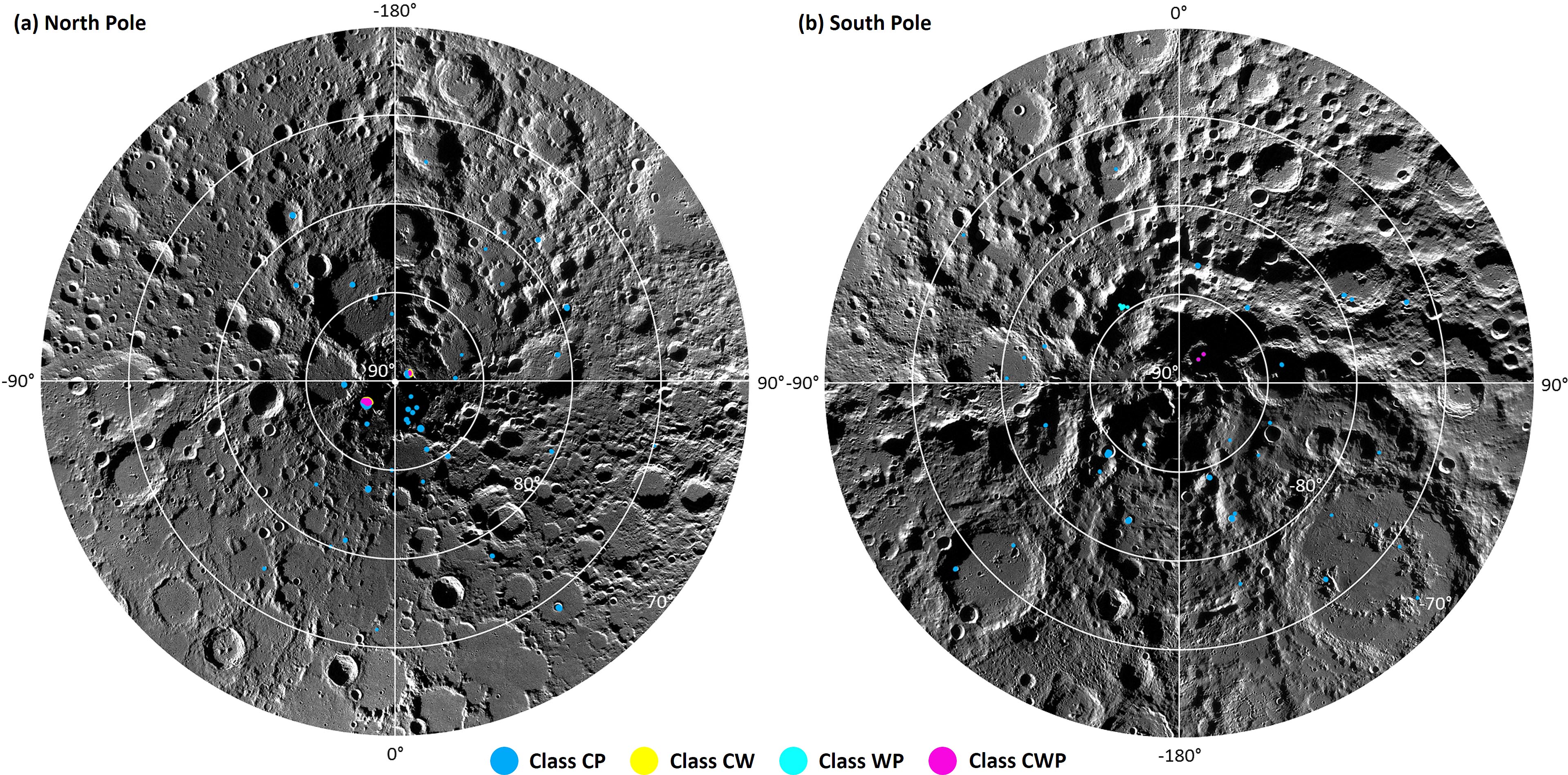SOURCE: ISRO

A recent study reveals evidence for enhanced possibility of water ice occurrence in the polar craters of the Moon. The study is carried out by the scientists of Space Applications Centre (SAC)/ISRO, in collaboration with researchers at IIT Kanpur, University of Southern California, Jet Propulsion Laboratory, and IIT (ISM) Dhanbad (Chakraborty et al., 2024). It suggests that the amount of subsurface ice in the first couple of meters is about 5 to 8 times larger than the one at the surface in both poles.
As such, drilling on the moon to sample or excavate that ice will be primordial for future missions and long-term human presence. Moreover, the study also suggests that the extent of water ice in the northern polar region is twice that in the southern polar region. As for the origin of this ice, the study confirms the hypothesis that the primary source of subsurface water ice in the lunar poles is outgassing during volcanism in the Imbrian period. The results also conclude that the distribution of water ice is likely governed by Mare volcanism and preferential impact cratering.
The research team used seven instruments comprising radar, laser, optical, neutron spectrometer, ultra-violet spectrometer, and thermal radiometer onboard the Lunar Reconnaissance Orbiter to understand the origin and distribution of water ice on the Moon.
Accurate knowledge of the distribution and depth of water ice occurrence in the lunar poles, as presented in the investigations, is crucial for constraining the uncertainties in selecting future landing and sampling sites for missions aimed at exploring and characterizing lunar volatiles.
This result also supports a previous study of SAC, ISRO pointing out the possibility of the presence of water ice in some of the polar craters, utilizing polarimetric radar data from the Chandrayaan-2 Dual-frequency Synthetic Aperture Radar instrument (Putrevu et al., 2023). Alongside, the presented comprehensive understanding of the occurrence of water ice in the lunar poles, in this study, is crucial for supporting ISRO’s future in-situ volatile exploration plans on the Moon.
Further details can be found in the published study in the International Society for Photogrammetry and Remote Sensing flagship journal ISPRS-P&RS (Chakraborty et al., 2024).
Reference:
Putrevu, D., Chakraborty, T., Mukhopadhyay, J., Syed, T.H., Bhiravarasu, S.S., Das, A., Pandey, D.K., and Misra, A., (2023), Lunar Impact Craters: New Perspectives from Full-polarimetric analysis of Chandrayaan-2 Dual-Frequency SAR data, Journal of Geophysical Research: Planets, 128, e2023JE007745, https://doi.org/10.1029/2023JE007745
Chakraborty, T., Syed, T.H., Heggy, E., Putrevu, D., and Dutta, U., (2024), On the reachability and genesis of water ice on the Moon, ISPRS Journal of Photogrammetry and Remote Sensing, https://doi.org/10.1016/j.isprsjprs.2024.03.020
The polar mosaic derived from the LRO Wide Angle Camera (WAC) of lunar (a) North polar region (70°N onwards) and (b) South polar region (70°S onwards), showing the locations of water ice regions belonging to various Classes. Regions within Blue, Yellow, Cyan, and Pink colored polygons belong to classes CP, CW, WP, and CWP, respectively. The images are in lunar polar stereographic projection.
Distribution of the total area and CPR values of the water ice regions belonging to various classes in different latitudinal bands in the (a) North Polar region (70°N onward) and (b) South Polar region (70°S onward). Similarly, the distribution of the total area and CPR values of the water ice regions belonging to various classes in different longitudinal bands are represented in (c) the North Polar region and (d) the South Polar region.